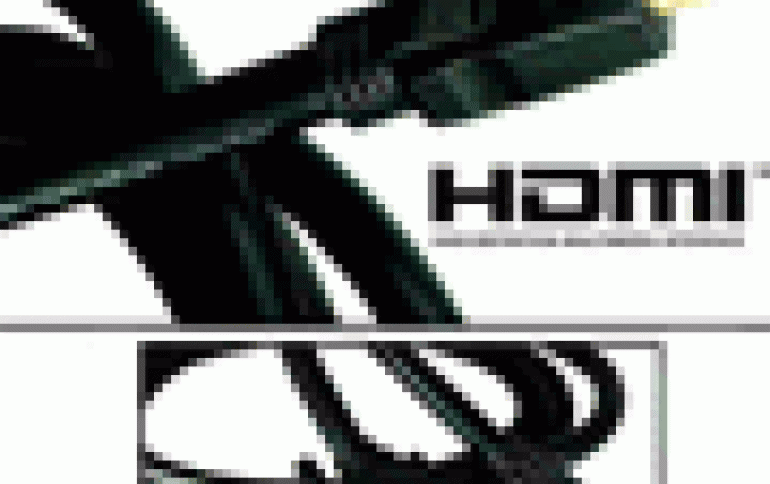
Sony Against Down-converting of HD Video
In an effort to encourage consumers to select the Blu-ray hardware and enjoy the high definition video titles at full resolution, Sony has reportedly decided not to down-convert the resolution of the HD signals coming out from analogue connections.
This would mean that owners of currently available TV sets that lack of the HDMI content protected digital interface would be able to enjoy Blu-ray video titles at full resolution.
Don Eklund, SPHE's senior vice president for advanced technologies, said that Sony's initial Blu-ray discs "and all of its Blu-ray titles for the foreseeable future" will be free of the "Image Constraint Token" (ICT) that's built into the Blu-ray and HD DVD standards.
The ICT is a digital flag within the AACS (Advanced Access Content System) that determines how Blu-ray and HD DVD players output high definition video signals through the player's component outputs. This controversial digital flag instructs the player to down-res the video signal from its analog component-video outputs to a standard-definition image to prevent high-resolution recordings ? but at the same time prevents viewing of HDTV images on any TV or device not equipped with a copyright-protected HDMI digital input. That would eliminate any gain in image quality for HDTV early-adopters who bought displays prior to two or three years ago, when DVI and HDMI digital inputs were introduced.
Note the video output through HDMI is unaffected by ICT since the HDMI output is copy protected by High-Bandwidth Digital Content Protection (HDCP).
The purpose of ICT is to prevent pirates from creating high resolution copies of HD DVD and Blu-ray discs via the unsecured analog outputs.
According to this this report, Eklund noted that Sony's key piracy concern isn't with analog HDTV signals but with the digital HDTV signal coming off the disc, which both Blu-ray and HD DVD are protecting with the robust Advanced Access Content System (AACS) endorsed by the Hollywood studios. If analog copying does become a problem down the road, the policy could change, he said ? but for now, "we have no plan to implement the Image Constraint Token. All of Sony's titles will come out of the analog output at full definition." He added that other studios still have the discretion to activate the token for all or individual titles.
Toshiba, the main backer of the rival HD DVD format, has not made any official announcement regarding the use of the ICT function. Although this would mean that any signal received through any other type of connector (not HDMI or HDCP-DVI) would be constrained by ICT, it is possible that the company will follow Sony's policy.
Don Eklund, SPHE's senior vice president for advanced technologies, said that Sony's initial Blu-ray discs "and all of its Blu-ray titles for the foreseeable future" will be free of the "Image Constraint Token" (ICT) that's built into the Blu-ray and HD DVD standards.
The ICT is a digital flag within the AACS (Advanced Access Content System) that determines how Blu-ray and HD DVD players output high definition video signals through the player's component outputs. This controversial digital flag instructs the player to down-res the video signal from its analog component-video outputs to a standard-definition image to prevent high-resolution recordings ? but at the same time prevents viewing of HDTV images on any TV or device not equipped with a copyright-protected HDMI digital input. That would eliminate any gain in image quality for HDTV early-adopters who bought displays prior to two or three years ago, when DVI and HDMI digital inputs were introduced.
Note the video output through HDMI is unaffected by ICT since the HDMI output is copy protected by High-Bandwidth Digital Content Protection (HDCP).
The purpose of ICT is to prevent pirates from creating high resolution copies of HD DVD and Blu-ray discs via the unsecured analog outputs.
According to this this report, Eklund noted that Sony's key piracy concern isn't with analog HDTV signals but with the digital HDTV signal coming off the disc, which both Blu-ray and HD DVD are protecting with the robust Advanced Access Content System (AACS) endorsed by the Hollywood studios. If analog copying does become a problem down the road, the policy could change, he said ? but for now, "we have no plan to implement the Image Constraint Token. All of Sony's titles will come out of the analog output at full definition." He added that other studios still have the discretion to activate the token for all or individual titles.
Toshiba, the main backer of the rival HD DVD format, has not made any official announcement regarding the use of the ICT function. Although this would mean that any signal received through any other type of connector (not HDMI or HDCP-DVI) would be constrained by ICT, it is possible that the company will follow Sony's policy.





















